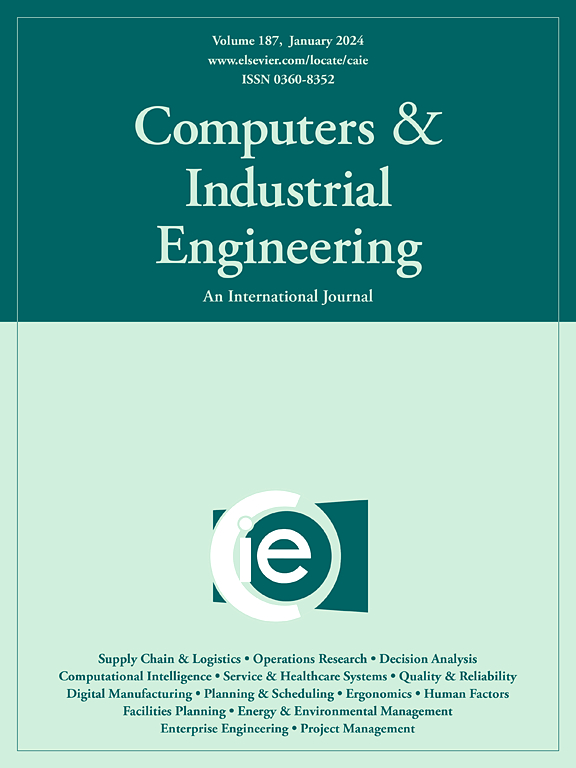平行结构复杂产物选择性装配优化的组分解聚新方法
IF 6.5
1区 工程技术
Q1 COMPUTER SCIENCE, INTERDISCIPLINARY APPLICATIONS
引用次数: 0
摘要
智能制造技术的进步正在推动生产向更高的精度和效率发展,将传统的质量控制方法推向极限。选择性装配可以将低精度组件组装成高精度产品,这在数字测量和增强现实技术驱动的智能装配线中显示出巨大的应用潜力。然而,现有的选择性装配方法仅适用于简单的线性装配,而不能解决具有大量公差信息和复杂装配连接的复杂产品。可以使用两种不成熟的方法来应对这些挑战,这两种方法都有明显的局限性。一种是忽略了复杂的公差信息,导致偏差较大;另一种是将所有公差信息不加区分地分组,导致指数群扩散。针对这一问题,本文提出了一种基于装配连接分离模型、组件精度聚合模型和优化算法的复杂产品选择性装配组件解聚方法。所提出的装配连接分离模型综合考虑了串并联连接中所有的公差信息,没有遗漏。所建立的构件精度聚合模型有效地整合了各构件的公差信息,克服了群数呈指数增长的问题。遗传算法也提供了一个很好的解决方案。用两个具有平行结构的典型实例证明了组分解聚方法在复杂产物的选择性组装方面优于传统方法。本文章由计算机程序翻译,如有差异,请以英文原文为准。
A new component depolymerization method for selective assembly optimization of complex products with parallel structures
The advancement of intelligent manufacturing technologies is driving production toward higher precision and efficiency, pushing traditional quality control methods to their limits. Selective assembly enables high-precision products to be assembled from low-precision components, which shows great potential for application in smart assembly lines powered by digital measurement and augmented reality technologies. However, existing selective assembly methods are only applicable to simple linear assemblies and fail to address complex products with numerous tolerance information and intricate assembly connections. Two immature approaches can be used to address the challenges, both of which have significant limitations. One overlooks intricate tolerance information, leading to large deviations, while the other indiscriminately groups all tolerance information, resulting in exponential group proliferation. In this paper, a new component depolymerization method for the selective assembly of complex products is proposed to address the challenges, which integrates the assembly connection separation model, the component precision aggregation model, and the optimization algorithm. The proposed assembly connection separation model comprehensively considers all tolerance information in serial and parallel connections without any omission. The established component precision aggregation model efficiently consolidates the tolerance information of each component, overcoming the problem of exponential growth in group numbers. The genetic algorithm is also developed to provide an excellent solution. Two typical cases with parallel structures are used to demonstrate the superior performance of the component depolymerization method for the selective assembly of complex products compared to traditional methods.
求助全文
通过发布文献求助,成功后即可免费获取论文全文。
去求助
来源期刊

Computers & Industrial Engineering
工程技术-工程:工业
CiteScore
12.70
自引率
12.70%
发文量
794
审稿时长
10.6 months
期刊介绍:
Computers & Industrial Engineering (CAIE) is dedicated to researchers, educators, and practitioners in industrial engineering and related fields. Pioneering the integration of computers in research, education, and practice, industrial engineering has evolved to make computers and electronic communication integral to its domain. CAIE publishes original contributions focusing on the development of novel computerized methodologies to address industrial engineering problems. It also highlights the applications of these methodologies to issues within the broader industrial engineering and associated communities. The journal actively encourages submissions that push the boundaries of fundamental theories and concepts in industrial engineering techniques.
 求助内容:
求助内容: 应助结果提醒方式:
应助结果提醒方式:


